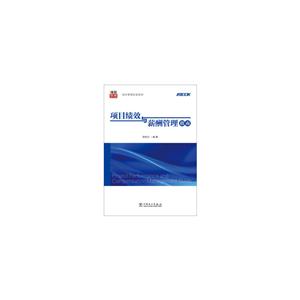PERMANENT MAGNETIC SUSPENSION SYSTEM: PRINCIPLE, MODEL,SIMUL

|
PERMANENT MAGNETIC SUSPENSION SYSTEM: PRINCIPLE, MODEL,SIMUL作者:孙凤 等 开 本:B5 书号ISBN:9787030575456 定价:98.0 出版时间:2018-06-01 出版社:科学出版社 |
PERMANENT MAGNETIC SUSPENSION SYSTEM: PRINCIPLE, MODEL,SIMUL 内容简介
章介绍了磁悬浮的研究背景、靠前外发展现状、分类及应用;第二章介绍了一种气隙控制式悬挂型永磁悬浮系统;第三章介绍了一种永磁铁运动控制式非接触悬浮球系统;第四章介绍了一种径向磁化旋转永磁铁驱动型非接触回转驱动系统;第五章分析了该非接触回转驱动系统的特性;第六章介绍了一种磁路控制式永磁悬浮系统;第七章提出了一种磁路控制式永磁悬浮系统的优化结构;第八章介绍了一种双铁球并联悬浮的磁路控制式永磁悬浮系统。
PERMANENT MAGNETIC SUSPENSION SYSTEM: PRINCIPLE, MODEL,SIMUL 目录
Contents Preface Chapter 1 Introduction 1 1.1 Background of non-contact suspension systems 1 1.2 Classification of magnetic suspension systems 5 1.2.1 Classification by magnetic force 5 1.2.2 Classification of Lorentz force in magnetic suspension systems 6 1.2.3 Classification of reluctance force in magnetic suspension systems 7 1.3 Application of magnetic suspension systems 14 1.4 MATLAB 17 1.4.1 Systematic environment 19 1.4.2 MATLAB system constitution 20 1.4.3 Control System Toolbox 21 1.4.4 Simulink Control Design 22 1.4.5 ADC and DAC 22 1.5 dSPACE platform 25 1.5.1 Introduction to the dSPACE 1103 26 1.5.2 Introduction to the dSPACE 1104 28 1.5.3 Introduction to ControlDesk 28 1.5.4 Integrated development environment of dSPACE 28 Chapter 2 Hanging type of permanent magnetic suspension system 31 2.1 Introduction 31 2.2 Suspension principle 33 2.3 Experimental prototype 34 2.3.1 Experimental prototype setup 34 2.3.2 Examination of attractive force 35 2.4 Mathematical model and analysis of suspension feasibility 36 2.4.1 Mathematical model 36 2.4.2 Analysis of suspension feasibility 37 2.5 Realization of zero-power control 39 2.5.1 Realization in device 39 2.5.2 Realization in mathematical model 40 2.5.3 Realization in control system 40 2.6 Numerical simulation 42 2.6.1 Calculation of feedback gains 42 2.6.2 Numerical simulation analysis 432.7 Experimental results 48 Chapter 3 Non-contact suspension system with permanent magnet motion feedback 53 3.1 Introduction 53 3.2 Principle of magnetic suspension 55 3.3 Realization of zero-power control 56 3.3.1 Zero-power control in experimental prototype 56 3.3.2 Zero-power control in model 58 3.3.3 Zero-power control in controller 593.4 Feasibility analysis of suspension 60 3.5 Numerical simulation 62 3.5.1 Simulation conditions 62 3.5.2 Calculation of feedback gains 63 3.5.3 Simulation results 643.6 Experimental results 68 Chapter 4 Non-contact spinning mechanism by using rotary permanent magnets 72 4.1 Introduction 72 4.2 Non-contact spinning principle 73 4.3 Non-contact spinning system 74 4.3.1 Suspension part 75 4.3.2 Spinning part 76 4.3.3 Characteristic experiment 784.4 Mathematical model 80 4.4.1 Rotational torque modelling 80 4.4.2 Rotation equation of iron ball 83 4.5 Spinning examination by numerical simulation 83 4.5.1 Step response 83 4.5.2 Velocity in steady state 85 4.5.3 Relationship between input velocity and output velocity 874.6 Spinning examination by experiments 88 4.6.1 Step response 89 4.6.2 Velocity in steady state 91 4.6.3 Relationship between input velocity and output velocity 92 Chapter 5 Performance analysis of non-contact spinning mechanism 95 5.1 Introduction 95 5.2 Magnetic field examination by IEM analysis 96 5.2.1 Analysis by using one magnet only 96 5.2.2 Analysis by using two magnets (I and III) 99 5.2.3 Analysis by using four magnets 1015.3 Simulation examination of rotational torque of iron ball 104 5.4 IEM analysis of rotational torque of iron ball 109 5.4.1 Modelling the remnant magnetization points 109 5.4.2 IEM analysis model and results 110 5.4.3 Rotational torque in stable rotational state 113 5.4.4 Horizontal force 1135.5 Experimental measurement of rotational torque 114 5.5.1 Measurement device set up 114 5.5.2 Experimental results of rotational torque 115 Chapter 6 Permanent magnetic suspension system using variable flux-path control method 118 6.1 Introduction 118 6.2 Principle of variable flux-path control mechanism 119 6.3 Experimental prototype 120 6.4 IEM analysis of the suspension mechanism 122 6.4.1 Analysis of magnetic flux field 122 6.4.2 Analysis of magnetic flux density and attractive force 126 6.5 Basic characteristics examination by experimental measurement 128 6.5.1 Magnetic flux density of the permanent magnet 128 6.5.2 Magnetic flux density examination by experiment 129 6.5.3 Attractive force examination by experiment 130 6.5.4 Semi-zero suspension force examination by experiment 131 6.5.5 Experimental examination of rotational torque of magnet 133 6.6 Mathematical model and feasibility analysis 134 6.6.1 Modelling suspension force 134 6.6.2 Modelling rotational torque of permanent magnet 135 6.6.3 Motion equations of motor and suspended object 135 6.6.4 Suspension feasibility analysis 136 6.7 Examination of suspension performance 137 6.7.1 Control system 138 6.7.2 Calculation of feedback gains 138 6.7.3 Simulation results 139 6.7.4 Experimental suspension results 140 6.7.5 Examination of semi-zero power suspension characteristic 142 Chapter 7 Improvement for zero suspension force ch
工业技术 汽车与交通运输 铁路运输
在线阅读
- 最新内容
- 相关内容
- 网友推荐
- 图文推荐
上一篇:涂层薄膜应力及其纳米压痕检测(英文)
下一篇:电工从入门到成才
零零教育社区:论坛热帖子
| [高考] 2022 西安电子科技大学《软件工程》大作业答案 (2022-04-25) |
| [家长教育] 孩子为什么会和父母感情疏离? (2019-07-14) |
| [教师分享] 给远方姐姐的一封信 (2018-11-07) |
| [教师分享] 伸缩门 (2018-11-07) |
| [教师分享] 回家乡 (2018-11-07) |
| [教师分享] 是风味也是人间 (2018-11-07) |
| [教师分享] 一句格言的启示 (2018-11-07) |
| [教师分享] 无规矩不成方圆 (2018-11-07) |
| [教师分享] 第十届全国教育名家论坛有感(二) (2018-11-07) |
| [教师分享] 贪玩的小狗 (2018-11-07) |






